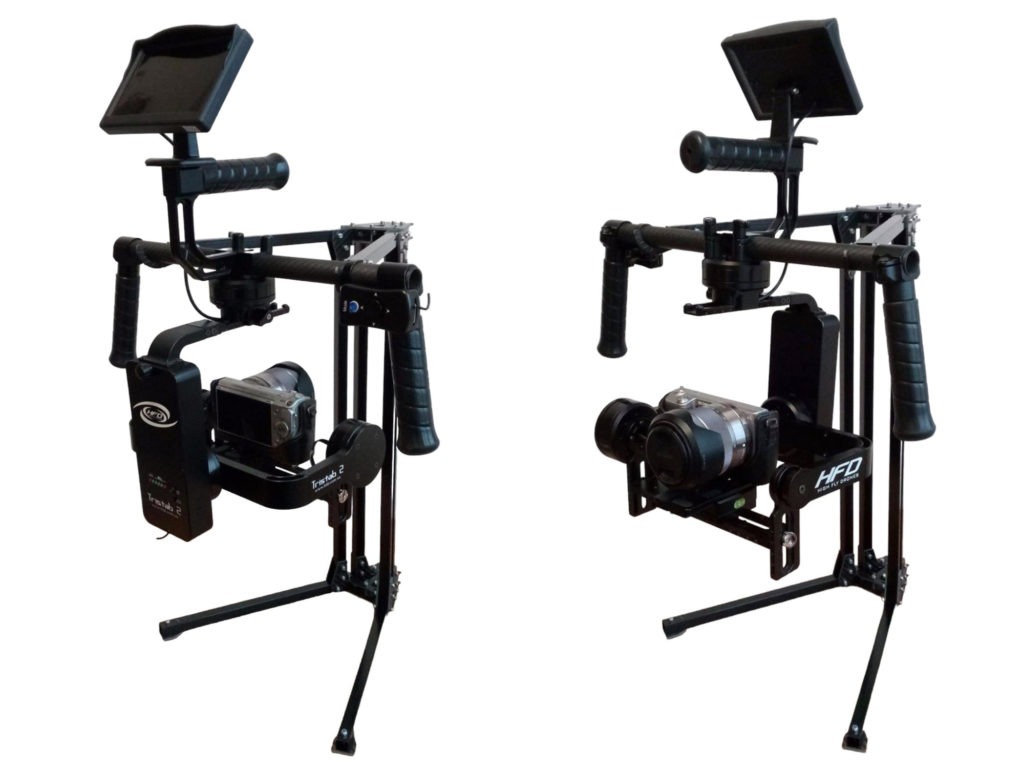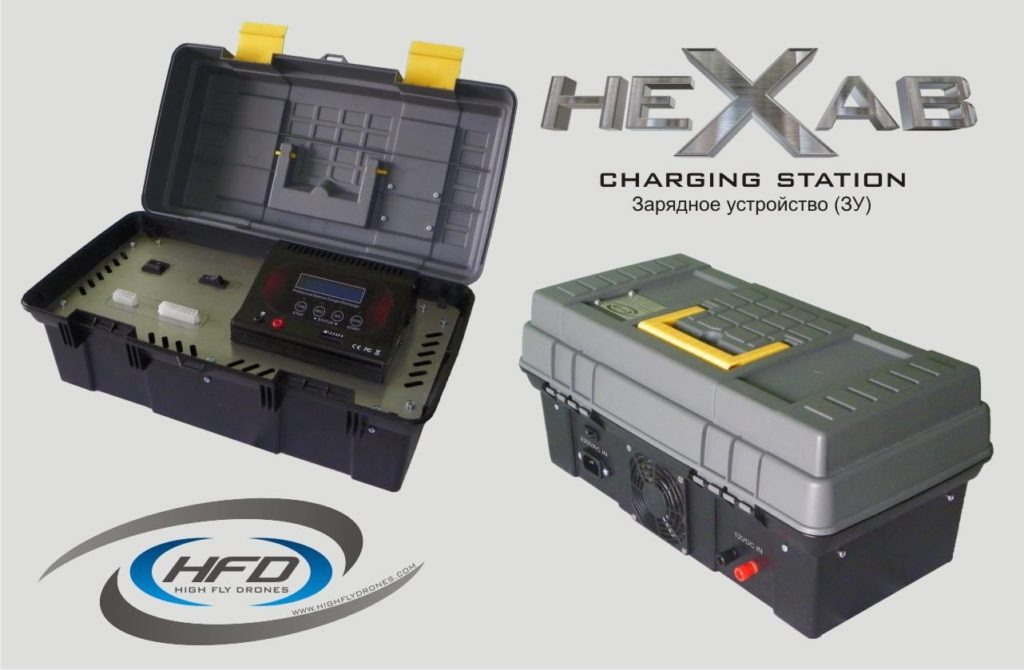
HFD SAPSAN, is a tactical unmanned drone.
Used for Search & Rescue, Intelligence, Surveillance and Reconnaissance (ISR)

The HFD AGROCOPTER 25L is an agricultural spraying drone technology that
was launched in 2019 by High Fly Drones (HFD), following its success
of its predecessor, HFD AGROCOPTER 15L. It’s ready to fly (RTF), easy
folding and easy to carry. Thanks to the folding structure
of its arms, it is convenient and economical to transport by vehicle and for
moving between different work areas. It has a night camera
FPV and obstacle avoidance radar.
Technical Characteristics Agrocopter 25L:
✔️Minimum loading weight: 25 kg
✔️Aircraft weight: 25 kg
✔️Maximum take-off weight: 50 kg
✔️Size when folded: L1.98 x W1.98 x H0.75 m
✔️Size when folded: M1.04 x W1.04 x H0.75 m
✔️Flight time without load: 20 minutes
✔️Flight time with full load: 16 minutes
✔️Spray time: 7-14 minutes
✔️Spray flow: 1.0~3.6 L/min
✔️Spray speed: 0-10 m/min
✔️Flight speed: 0-15 m/min
✔️Spray width: 6 m
✔️Maximum wind resistance: Grade 5
✔️Control distance: Radius 1250 m
✔️Working voltage: 44.4V
✔️Nozzles: 6 pieces

After the success of the HFD TRISTAB 1 DSLR stabilization system, in 2017 the High Fly Drones
(HFD) designed and developed HFD TRISTAB 2, a more advanced and updated version.
The following features were introduced with HFD TRISTAB 2
✔️Easy download control: on the LCD touch screen or from the app.
✔️Independent locking: each axis is equipped with a lock.
✔️Wireless control using Bluetooth.
✔️Quick installation system without leveling.
✔️Different modes: TikTok Portrait, Selfie, Inception, Time-lapse.
✔️High quality aluminum alloy frame.
✔️Ability to support DSLR camera up to 4.7kg.
✔️Charger and batteries included.
✔️Use time without interruption up to 3 hours.

The HFD AGROCOPTER 15L opened a new chapter in the history of agriculture.
Designed and developed by High Fly Drones (HFD) in 2016 in Kharkiv
of Ukraine, the HFD AGROCOPTER was the first of its kind in
drones and agriculture industry of Ukraine, designed specifically for
crop protection. The advanced flight control system, the portable
foldable body and the simple and convenient remote control system
make the HFD AGROCOPTER 15L revolutionary, highly effective
and safe for crop protection work.

Designed and developed by High Fly Drones (HFD) in 2016, the GCS TABLET 1
is a portable ground control station that incorporates industrial grade
computer system and remote data control system. The GCS TABLET 1
provides functions such as mission planning, attitude control, load control,
remote monitoring, real-time video viewing, etc. The ready to
use mobile ground control station (GCS) is a flexible and universal solution for the
control of unmanned vehicles and cargo.
GCS TABLET 1 comes with ANDROID pre-installed, 10.1″ LCD screen, resolution
1920*1200, 8GB/DDR4 memory, 256G SSD, operating temperature range -20~55ºC,
covers vibration requirements and basic protection for road, rail and
air transportation.

In late 2014, High Fly Drones (HFD) released the HFD TRISTAB 1, a motorized
DSLR camera stabilization system, which had a maximum payload of 7.2 kg, which
housed its heavier professional cine and DSLR cameras
seasonal.

The HFD LORAN Unmanned Aircraft System (UAS) was a 2014 project by
the High Fly Drones (HFD) that were intended for long-range surveillance purposes and
of long duration.
It could offer a long range of up to 5 kilometers, cargo lifting capacity
up to 5 kg, air surveillance up to 1 hour, and was considered a particularly efficient
drone of that era. It was able to perform fully autonomous and continuous
flights using the built-in advanced GPS system.
Features of HFD LORAN:
✔️Long-distance flights with a range of up to 5 kilometers.
✔️Ability to lift loads up to 5 kg.
✔️Continuous air surveillance flights up to 1 hour.
✔️Highly efficient UAS.
✔️Camera system: 3-axis stabilized with 10X optical zoom and night vision
vision.
✔️Ability to perform fully autonomous flights using it
advanced integrated GPS system.
✔️Designed to fly in all weather conditions (Waterproof version after special
order).
✔️Ability to transport equipment to isolated locations.
✔️VTOL, vertical takeoff and landing on any terrain.
✔️It can reach an altitude of up to 1 kilometer.

In 2014, HFD launched the BUDGETCOPTER project with the intention of making
drone technology available to the general public and hobbyists at affordable prices. There were
two models in the Budgetcopter range, the HFD SAPPHIRE and the HFD ZEN, which they had
exactly the same technical features but differed in appearance and design. The
prices of the Budgetcopter series drones started at USD 350 plus tax.
Technical Characteristics HFD SAPPHIRE & HFD ZEN
Basic Parameters:
✔️Operating Temperature: -10°C ~ 50°C
✔️Power consumption: 3.12W
✔️Take-off Weight: <1200g
✔️Stabilization Accuracy (GPS Mode):
o Vertical: 0.8m
o Horizontal: 2.5m
✔️Maximum Angular Rotation Speed: 200°/s
✔️Maximum Tilt Angle: 45°
✔️Maximum Ascent / Descent Speed: 6m/s
✔️Maximum Flight Speed: 10m/s
✔️Diagonal Distance (engine center to engine center): 350mm
TX Parameters:
✔️Operating Frequency: 2.4GHz ISM
✔️Control Channels: 7 Channels
✔️Communication Distance: 1000m
✔️Receiver Sensitivity (1%PER): >-100dBm
✔️TX Power Consumption: <20dBm
✔️Operating Current / Voltage: 52 mA@6V
✔️AA Battery: 4 Required
Charger & Battery Parameters:
✔️AC Charger Input: 100-240V
✔️Charging Current: 1A/2A/3A
✔️Current Consumption for Balancing: 200mA
✔️Capacity: 20W
✔️Battery Type: LiPo

The Ground Control Station (GCS) is an advanced control system designed by
the High Fly Drones (HFD) for Autonomous UAS Drone Systems. Research and Development
(R&D) of GCS started in 2012 and ended with the production of the first one
prototype in 2014.
It consists of a Mission Planning Module (GCSMP) and a camera operator
monitoring (GCSVSO). The GCSMP communicates wirelessly with the UAS at all times,
giving the operator real-time information about flight parameters,
such as attitude, direction, altitude, GPS and more. GCSVSO receives signals
video surveillance from the UAS and also controls pitch, roll and yaw motion
of the built-in high-resolution camera.
Read more details
Read more
The HEXAB Charging Station (CS) is a 200 Watt Lithium Polymer battery charger
(LiPo) and NiMh designed and developed by HFD. It can load packets
of LiPo batteries provided with HEXAB in a short time compared to
other chargers on the market. HEXAB CS can be used in the field or in
installations with an AC outlet, as it has two selectable power inputs, 220V AC and 12V
DC. During work in the field, you can use the power from
your car to charge the battery packs using this station
charging. The easy-to-use interface makes it less complicated for the operator to charge them
battery packs. It is capable of charging and discharging up to 6 battery cells
NiMh and LiPo. HEXAB CS has a balanced charging function, which offers
longer life and safe use of the battery. HEXAB CS is too
designed to charge the HEXAB Pilot Control Unit (PCU) which can
charged in 25 minutes, offering a usage time of up to 2 hours.
Technical Characteristics:
✔️Power: 200 Watt
✔️Input 1: 220V AC
✔️Input 2: 12V DC
✔️Cell type: Lithium Ion and Polymer
✔️Number of cells: 6S
✔️Balanced charging capability: Yes
✔️Discharge capacity: Yes
✔️Screen: LCD
✔️Smart charging: Yes
Read more details
Read more
The HFD HEXAB unmanned aerial system (UAS) is a hexacopter
airplane capable of fully autonomous flight (autopilot). It was the
first successful drone project by High Fly Drones (HFD). Research and Development
started in 2012 and production of the first prototype was completed in 2014.
The HEXAB was ideal for aerial surveillance missions or for videography and
photography. The UAS is capable of reaching a height of up to 500 meters and has a range
up to 1.5 km. With good piloting skills, our UAS can fly
up to 25-30 minutes without interruption. Our UAS is equipped with an advanced system
GPS, which it uses to perform autonomous missions. With the introduction of
of necessary data and GPS points at the Ground Control Stations (GCS) which
are provided, the HEXAB can take off by itself, pass through points such as
designated by the pilot and to land back where it started, all of that
autonomously without the need for the pilot to control it during flight.
The UAS comes with 4 10000 mAh battery packs designed by HFD, which
they can be replaced in seconds, unlike the old method with
velcro strap which took at least 5 minutes and offered less reliability. The
HFD’s battery system offers super-fast battery change, saving
valuable time.
The HEXAB UAS is equipped with an advanced and highly accurate GPS system, the
which it uses to determine location, altitude, direction and
many other necessary parameters to successfully execute autonomous missions. THE
pilot can enter the necessary data and GPS points at the Control Stations
Grounds (GCS) provided and program the UAS wirelessly to perform a
autonomous mission. The UAS will take off by itself, pass through the points as it is
set by the pilot in the GCS and will land back to the point from which
took off, all autonomously without the pilot needing to manually control it by
during the flight. The HEXAB UAS also uses GPS to fly to
various flight modes such as autopilot, return to home position, automatic
landing, altitude hold and position hold. In the event that the UAS is lost or
crashes, the pilot can use the Ground Control Station (GCS) to
locate the last known GPS location of the UAS prior to the crash to plot
a UAS rescue mission.
Test flight video 👉 HERE 👈
The HEXAB UAS is equipped with two cameras, each dedicated for specific purposes.
The camera on the top is designed for the pilot’s vision, which is shown in the
LCD display mounted on the Pilot Control Unit (Pi-CU). His sight
pilot is displayed on the 7″ LCD screen along with flight parameters such as attitude,
direction, altitude, GPS, direction to home position, geographic coordinates
and more. The camera for the pilot’s vision can be tilted up and down by sending
wireless commands from the pilot’s control unit, this helps the pilot to make accurate
landing. The second camera is a surveillance camera that records video in
high resolution and sends the video stream to GCSVSO. This camera is super stable,
meaning that regardless of the movement of the UAS, the camera will maintain a fixed position with the
help engines to record clear video. The stability of the camera is very
good when flying in windy or turbulent weather conditions. This camera system
has the ability to tilt (up-down), swivel (right-left) and rotate
(twist), which can be done with the controls in GCSVSO
Have questions?